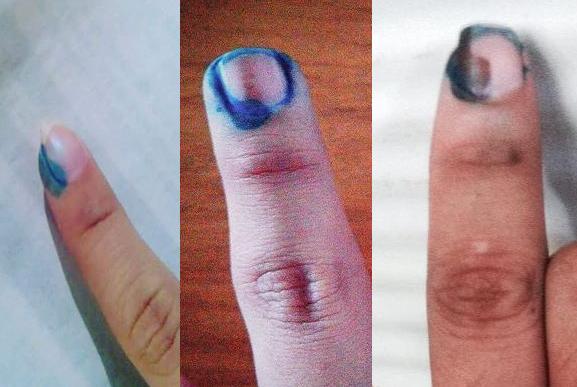
Electoral ink, indelible ink, electoral stain or phosphoric ink is a semi-permanent ink or dye that is applied to the forefinger (usually) of voters during elections in order to prevent electoral fraud such as double voting. It is an effective method for countries where identification documents for citizens are not always standardised or institutionalized.
History
During the first election in India, the election commission faced one of their biggest issues: identification theft. To protect people from casting their vote twice they reached out to the NPL (National Physical laboratory) of India. A team of scientists lead by Dr. M.L. Goel FCS (Fallow’s Chemical Society, London) to make an ink to protect the interest of Indian population. The Indian government started the use of indelible ink during the third election and since then has used the same products till today. The Indian government also exports ink to many developing countries for their elections. Although the most common election ink used worldwide was invented by Filiberto Vázquez Davila, Mexican biochemical engineer, who invented the indelible ink most commonly used in elections.
Application
Electoral stain is used as a good security feature to prevent double voting in elections. Ink is normally applied to the left hand index finger, especially to the cuticle where it is almost impossible to remove quickly. Ink may be applied in a variety of ways, depending on circumstance and preference. The most common methods are via dipping bottles with sponge inserts, bottles with a brush applicators, spray bottles, and marker pens. With all methods the finger should be left to dry for 15–30 seconds and exposed to light before being cleaned to ensure the mark remains visible for the desired length of time.
Composition
Electoral stain typically contains a pigment for instant recognition, and silver nitrate which stains the skin on exposure to ultraviolet light, leaving a mark that is impossible to wash off and is only removed as external skin cells are replaced. Industry standard electoral inks contain 10%, 14% or 18% silver nitrate solution, depending on the length of time the mark is required to be visible. Although normally water-based, electoral stains occasionally contain a solvent such as alcohol to allow for faster drying, especially when used with dipping bottles, which may also contain a biocide to ensure bacteria aren’t transferred from voter to voter.
Longevity
Election stain typically stays on skin for 72–96 hours, lasting 2 to 4 weeks on the fingernail and cuticle area. The election ink used in India puts a permanent mark on the cuticle area which disappears only with the growth of new nail. It can take up to 4 months for the stain to be replaced completely by new nail growth. Stain with concentrations of silver nitrate higher than 18% have been found to have no effect on stain longevity, as even with stronger solutions silver nitrate doesn’t have a photosensitive reaction on live skin cells. This means that the stain will wear off as new skin grows.
Silver nitrate is an irritant and frequently harmful at 25% solution and above, even being used as an effective, if painful, cauterizing agent in the treatment of rhinitis at that concentration.
At 25% the silver nitrate content will also start to precipitate depending on conditions, forming fine crystals which can also be irritating on skin and reducing the active dissolved silver nitrate back to as low as 18%.
Colour
Electoral stain is traditionally violet in colour, before the photosensitive element takes effect to leave a black or brown mark. However for the Surinamese legislative election, 2005, orange replaced violet as the colour for marking the voters’ fingers as it was found to last just as long and be more appealing to voters, as it resembled the national colours. In some parts of the world, women stain their fingers violet for cosmetic reasons, meaning a different colour would be needed in such places to distinguish the marks and to ensure nobody was unfairly prevented from voting
How Do We Remove indelible Ink? See this Video: